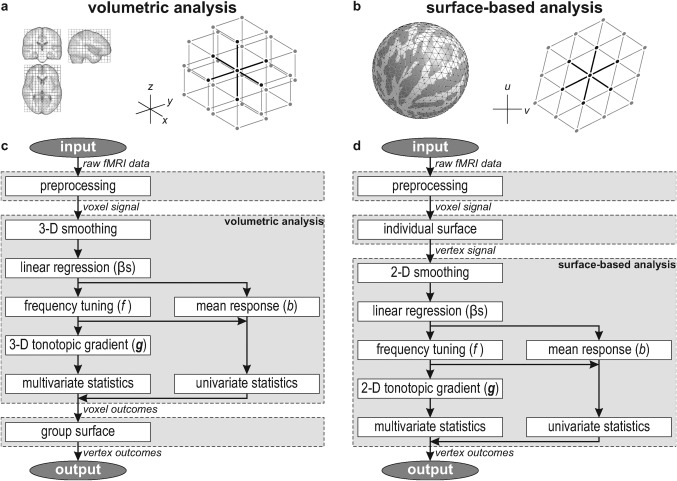Figure 2.

(a) The anatomical image volumes of subjects were registered by normalising them to a standard stereotaxic space. In the resulting cubic grid, each voxel typically has six face‐neighbours that are taken into account to determine three‐dimensional gradients regarding stimulus preference. (b) In parallel, cortical surfaces were determined for all subjects and registered on the basis of their gyration patterns. In the resulting triangular mesh, each voxel typically has six edge‐neighbours that are taken into account to determine two‐dimensional gradients regarding stimulus preference. (c,d) Flow charts summarising the volumetric and surface‐based analyses, respectively. In the volumetric approach, analyses are carried out voxel‐by‐voxel, and the results are projected on a group cortical surface for visualisation purposes only; in the surface‐based approach, data are sampled on individual cortical surfaces in an early stage, and analyses are carried out vertex‐by‐vertex.
